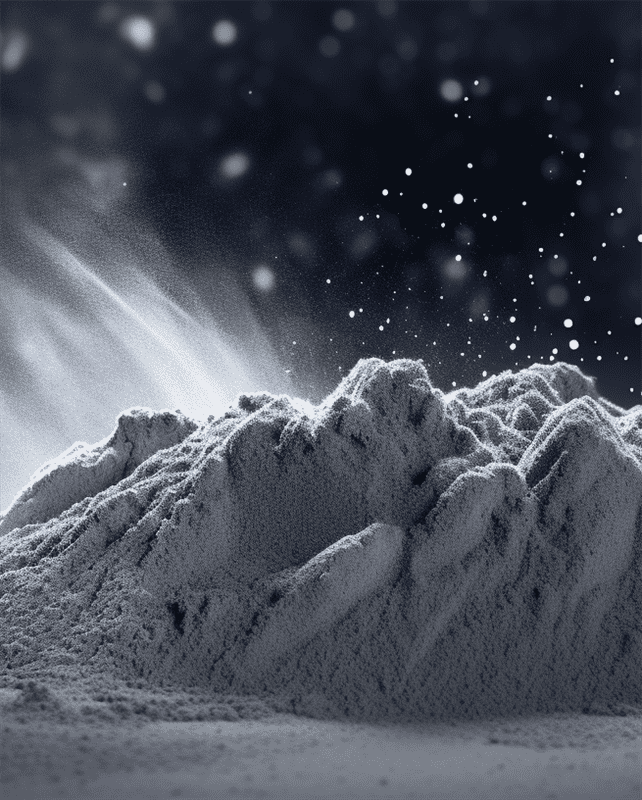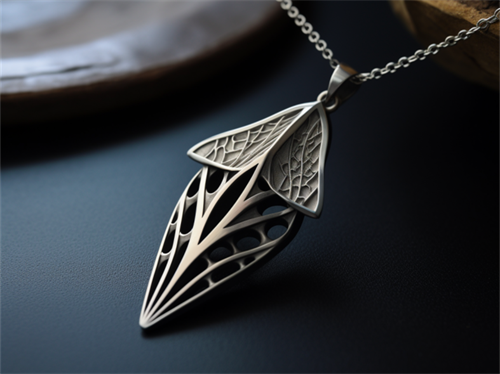金属雾化 是一种通过雾化将块状金属转化为细小金属粉末的工艺。它通常用于生产金属粉末,以满足不同行业的各种应用需求。本文提供了一份全面的金属雾化指南,详细介绍了雾化的关键环节。
金属雾化概述
金属雾化是利用高速气流或液流将熔融金属分解成细小的液滴。液滴在飞行过程中迅速凝固,形成细小的球形金属粉末。
关键细节:
- 用于生产铝、铜、铁、镍等金属的细球形金属粉末。
- 根据方法分为气体雾化、水雾化和离心雾化
- 粉末大小从 10 微米到 250 微米不等,分布均匀
- 实现液滴的快速凝固,产生细粒度粉末
- 主要用于金属粉末冶金和制造金属粉末部件
雾化方法
| 方法 | 详细信息 |
|---|---|
| 气体雾化 | 高压惰性气体射流分解熔融金属流 |
| 水雾化 | 利用喷射水流分解金属流 |
| 离心雾化 | 熔融金属倒在旋转的圆盘上,并从边缘甩出 |
金属粉末应用
| 应用 | 详细信息 |
|---|---|
| 粉末冶金 | 压制和烧结粉末压块,制造 PM 部件 |
| 金属快速成型制造 | 使用雾化粉末作为 DED、PBF 等 AM 工艺的原料 |
| 金属注射成型 | 将粉末与粘合剂混合,注入模具并脱模/烧结 |
| 热喷涂涂层 | 利用等离子体/燃烧喷雾将雾化粉末喷射到表面上 |
| 钎焊 | 在高温钎焊工艺中使用雾化粉末中间膜 |
| 焊接 | 在焊接过程中用作填充材料的雾化金属粉末 |
金属雾化规格
| 参数 | 典型范围 |
|---|---|
| 粉末大小 | 10 至 250 微米 |
| 尺寸分布 | 紧密的球形形态 |
| 纯净 | 高达 99.9% |
| 表观密度 | 真实密度约为 40-50% |
| 氧化物含量 | <1%,惰性气体雾化时更低 |
| 生产率 | 10 - 100 公斤/小时 |

金属雾化设备
金属雾化工艺涉及的关键设备包括
金属雾化设备指南
| 设备 | 目的 |
|---|---|
| 感应炉 | 将金属电荷材料熔化成液态 |
| 坩埚 | 在将熔融金属倒入雾化器之前先将其保持住 |
| 通迪什 | 充当蓄水池,便于浇注金属 |
| 雾化机制 | 利用气体/液体喷射将熔融金属分解成液滴 |
| 粉末收集系统 | 从输送气体/液体中收集和分离雾化粉末 |
雾化器类型和特点
| 雾化器 | 原则 | 特点 |
|---|---|---|
| 气体雾化器 | 高压惰性气体喷射 | 粉末更细,氧化程度更低 |
| 水雾化器 | 高速水射流 | 生产率更高,颗粒更大 |
| 离心雾化器 | 将熔融金属倒在旋转的圆盘/杯上 | 结构紧凑,易于操作 |
辅助设备
- 金属带电材料、气体、水
- 泵、阀门、喷嘴
- 温度控制和监测
- 控制面板、仪表
- 分级筛分站
- 除尘和气体净化系统
设计标准和安装要求
- 按照 ASTM B213 等标准制造,用于气体雾化
- 定制设计,满足生产要求
- 需要惰性气体供应、供水和供电
- 安装面积取决于雾化器的占地面积
- 必须进行除尘和废水管理
金属雾化器供应商
主要供应商
| 供应商 | 地点 | 产品 |
|---|---|---|
| PSI | 加拿大 | 气体、水和离心雾化器 |
| ALD 真空技术 | 德国 | 气体和水雾化器 |
| 中钢热电 | 中国 | 水和气体雾化器 |
| VTI 真空技术公司 | 英国 | 高端气体雾化器 |
定价
- 小型实验室设备的起价约为 $100,000 美元
- 工业规模生产的雾化器从 $500,000 到 $2,000,000 不等。
- 大型定制系统的成本可高达 $4,000,000 美元
- 辅助设备、安装、消耗品的额外费用
选择雾化器供应商
- 声誉和经验水平
- 定制和尺寸范围能力
- 生产能力和交付周期
- 预算限制
- 地点和服务支持
- 粉末规格要求
- 提供辅助设备
金属雾化器的操作
典型雾化工艺
| 步骤 | 活动 |
|---|---|
| 1 | 在感应炉中装入待雾化金属 |
| 2 | 完全熔化金属,使其达到过热温度 |
| 3 | 以所需压力启动雾化器中的惰性气体流 |
| 4 | 打开感应炉,将熔融金属倒入坩埚中 |
| 5 | 让金属流入雾化器,分解成粉末 |
| 6 | 气体携带的粉末进入旋风分离器收集 |
| 7 | 筛粉,去除大颗粒和细粉 |
| 8 | 冷却后将最终粉末装入容器 |
关键工艺参数
- 金属过热温度
- 进入雾化器的熔融金属流量
- 气体/水流量和压力
- 浇注配置和金属装载量
- 喷嘴设计和几何形状
- 收集和筛分方法
维护方面
- 定期检查和更换磨损的喷嘴、阀门和衬垫
- 检查煤气管道、喷水器是否有影响流量的堵塞物
- 监控离心雾化器的驱动装置和轴承
- 清洁管道和容器内的粉末沉积
- 维护感应炉、温度传感器等。

优势与局限
优点和优势
- 可生产精细的球形粉末,是 AM、MIM 等的理想之选。
- 实现高粉末生产率
- 粒度分布均匀一致
- 惰性气体雾化产生的良好纯度
- 尺寸范围灵活,从 10 μm 到 300 μm 不等
- 可按吨位生产的可扩展工艺
缺点和局限性
- 水雾化粉末可能被高度氧化
- 离心雾化器有尺寸限制
- 粒度分布控制可能比较困难
- 极细粉末带来安全问题
- 设备投资高
- 工艺需要严格控制和优化
如何选择金属雾化器
选择的主要考虑因素
- 需要雾化的金属类型
- 所需的粉末数量、尺寸和形状规格
- 所需纯度和氧气含量
- 预算限制和扩展计划
- 可用面积和高度
- 辅助系统能力
- 所需的自动化和控制水平
- 售后服务和维护
- 符合标准和认证
做出正确的选择
- 根据经验、能力和审查结果筛选供应商
- 明确粉末要求并获得设计方案
- 比较各种方案的成本、生产率和功能
- 评估辅助设备的质量和保修期
- 检查供应商的生产和交货时间表
- 验证设计、安装和售后支持
- 选择模块化、可定制的雾化器,提高灵活性
- 优先考虑质量和严格配送,而不是最低成本
- 选择愿意针对特定需求共同开发系统的供应商

常见问题
问:雾化金属粉末的典型尺寸范围是多少?
答:大多数雾化器的粒度范围在 10 微米到 250 微米之间。气体雾化器可以制造 10 微米以下的较细粉末,而水雾化器可以制造 100 微米以上的较粗粉末。
问:哪些金属可以雾化成粉末状?
答:常见的雾化金属包括铝、铜、铁、镍、钴、钛、钽、不锈钢。甚至镁等合金和活性金属也可以雾化。
问:雾化粉末的球形程度如何?
答:雾化粉末具有高度球形的形态,因为液滴在飞行过程中会迅速凝固。球形度可达 0.9 至 1。气体雾化可产生更多球形粉末。
问:雾化金属粉末的主要用途是什么?
答:主要用于粉末冶金,用于压制和烧结部件。精细粉末也是使用粉末床熔融或定向能沉积技术进行金属添加制造的理想材料。
问:如何控制雾化过程中的粉末粒度分布?
答:喷嘴设计、熔融金属流速、气体压力和雾化配置决定了粒度分布。雾化后的多级筛分有助于缩小粒度分布。
问:金属雾化需要特殊技能吗?
答:虽然这是一种自动化工艺,但需要掌握冶金、热喷涂、粉末处理等方面的技能,才能正确优化和控制雾化器,生产出高质量的金属粉末。
问:雾化器的生产率由什么决定?
答:金属流量、气体压力和雾化器容量决定了生产率。工业雾化器每小时可生产 100 公斤粉末,而实验室雾化器每小时只能生产几公斤。
问:如何确定正确的雾化器尺寸和类型?
答:关键因素包括所需粉末数量、预算、现有基础设施支持和所需粉末特性。这些因素有助于在所需容量的气体、水或离心式中进行筛选。
问:金属雾化会产生任何副产品废物吗?
答:固体废物不多,但需要进行废气/废水处理。粉末处理区也需要除尘。需要妥善处理用过的过滤器和消耗品。
结论
金属雾化可以利用气体、水或离心力将大块金属转化为细小的球形粉末。通过对工艺参数的严格控制,可生产出高纯度、定制化的粉末,是 AM 的理想选择。本指南总结了金属雾化系统的工作原理、类型、应用、供应商和技术注意事项。通过这些结构化信息,可以轻松比较各种选项,选择合适的雾化器。
